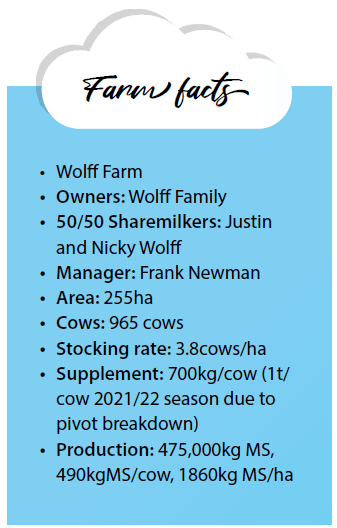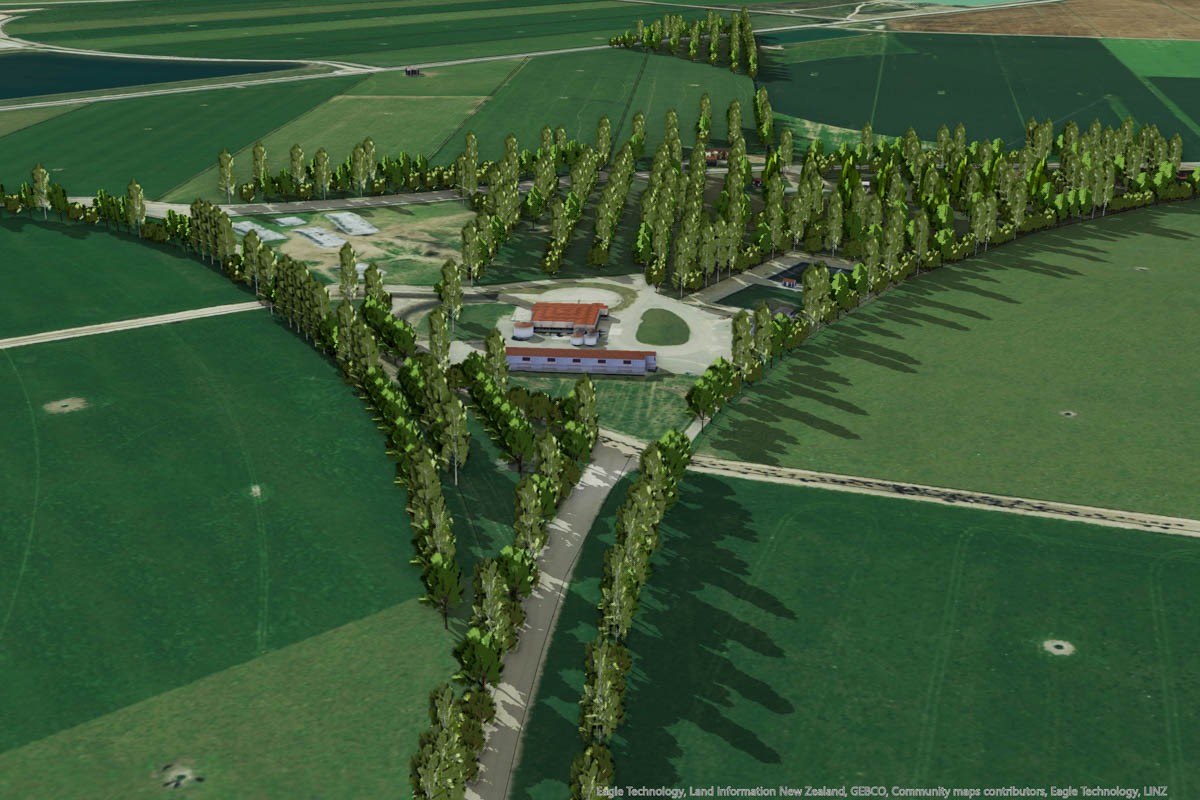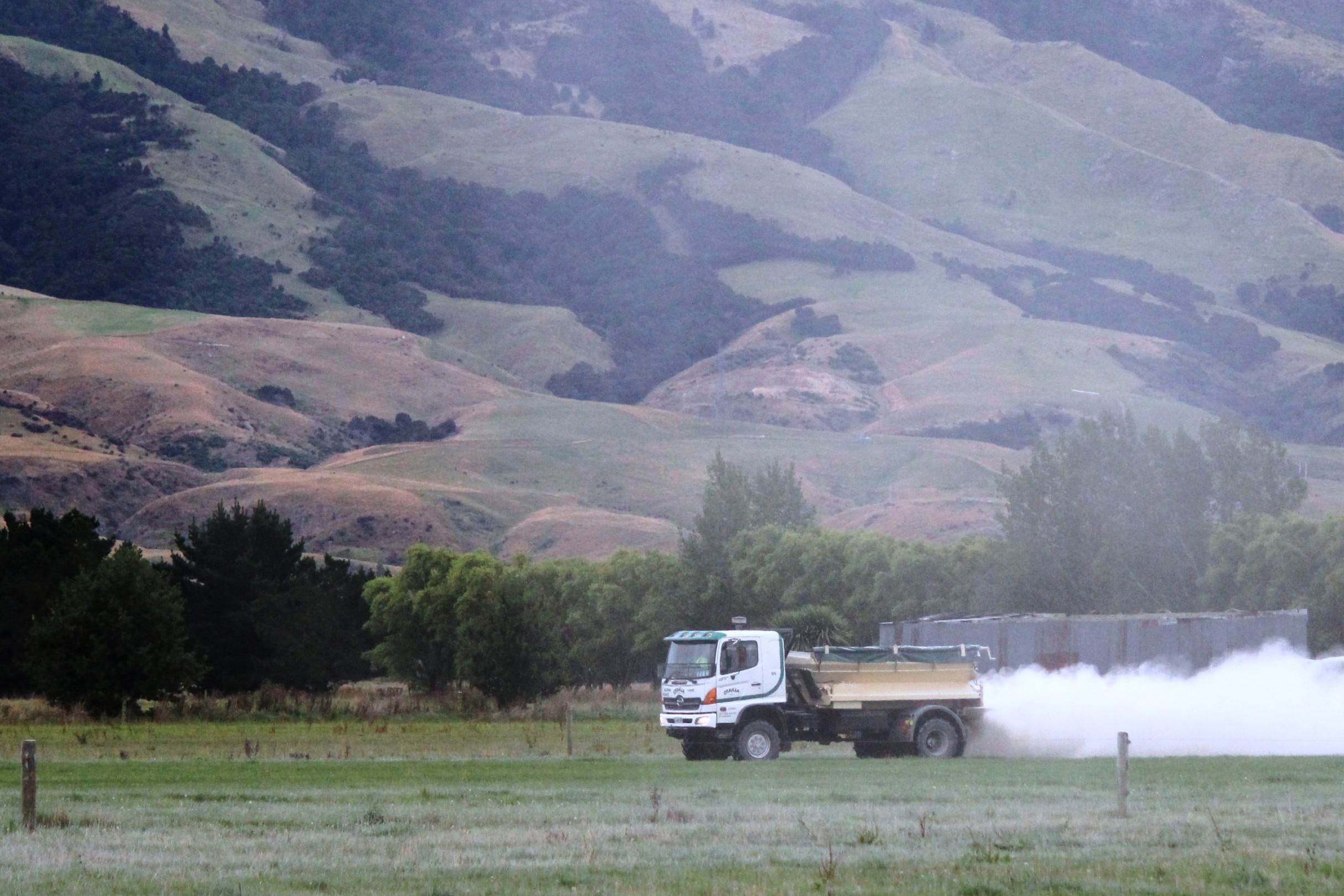A vet’s traffic light system is monitoring tens of thousands of Canterbury cows for reproductive performance. By Anne Lee.
 There’s never likely to be one silver bullet when it comes to getting top results from mating but a more colourful approach could help with hitting the targets.
There’s never likely to be one silver bullet when it comes to getting top results from mating but a more colourful approach could help with hitting the targets.
Canterbury-based vet Chris Norton is a dairy reproductive consultant and through his work at Selwyn Rakaia Veterinary Services he’s developed a traffic light system to monitor a whole range of metrics that can have an impact on the all-important goal of getting cows in calf within a tight mating period.
He uses the system to monitor more than 35,000 cows in the Mid-Canterbury area and says it’s time to stop blaming things outside our control, such as weather, for poor reproductive results and take a good look at the things that can be controlled.
His traffic light spreadsheet acts as a visual alert – if the metric is highlighted green, it’s good or even ahead of the target.
If it’s orange it’s sitting about average – so room for improvement.
If it’s red that’s a warning sign and it needs attention.
“Back in the early days farmers would call me in and ask advice on what went wrong – but they were asking me in February or March when they’d just got their pregnancy test results back.
“The things that went wrong, were likely to have gone wrong way back in the previous year, maybe right back in the previous seasons.
“It’s monitoring all of the things that impact on mating – monitoring them and then, most important of all, acting on the information, doing something about it.”
Frank Newman is farm manager at Wolff Farm near Dunsandel working for 50/50 sharemilkers Justin and Nicky Wolff on Athol and Bess Wolff’s family owned operation.
Reproductive performance has hovered just over the 70% six-week in-calf rate mark in recent years but this year the team has been rewarded with a 75% score after 10 weeks mating.
Empty rate after 10 weeks mating is 11.5%.
For Canterbury, where empty rates can sit well north of 15% in the large herds, Chris says the results put the farm above average.
Frank has been managing the farm for 10 years.
He’s originally from Staffordshire, England, and has dairying, and farming, well and truly in his DNA, going back generations.
“He’s a great stockman – one because he observes the cows and has a good eye for picking up issues early and two because he acts on what he sees – he’s prepared to do something about it,” Chris says.
That doesn’t mean Chris is a frequent flyer at the farm – because Frank acts quickly he can often head off potential issues before they become serious.
The farm team of Frank, Justin and Nicky are pro-active rather than reactive.
“Looking at Wolff Farm’s indicators in the traffic light dashboard, everything is sitting in either orange or green – there are no reds.
“That’s great but this isn’t a matter of do it once and you’re set, it’s a constant work on.
“Every part of the season flows onto the next so it can take time to work your way up to the results you want.
“It’s going to be extremely hard to get good mating results if you’ve had a bad, drawn-out calving in the same season – realistically it’s going to take you till next mating to see improvements even if you take action immediately at calving.”
From March, Frank is already preparing for next mating. Scanning results are in so he knows which cows will be calving early and which are the later calvers.
He identifies any cows below a body condition score (BCS) 4 and they’re recorded as light.
“They go on to once-a-day (OAD) milking in March. I’ve found that’s long enough to get them up to a (BCS) 4.5 by the end of May.
“From the beginning of March we start up the OAD herd and then add to it as the weeks go on.
“It means we’re running three herds for a while but we’ll be looking at calving date and condition and we add in early calvers and then the three-year-olds and once it gets to about 300, we’ll go back to having two herds.
“The later calvers – the ones calving in September that are over (BCS) four will stay in the twice-a-day herd,” Frank says.
They have variable in-shed feeding where EID allows cows to be fed individualised quantities.
“We set it up so we don’t feed any barley to the empties, or the late calving or fat cows through the autumn.
“The lighter cows and early calvers get 2kg barley and palm kernel,” he says.
Any cows still classed as light by the first week of May will be dried off.
Chris does a scan in mid-May looking for any cows that have slipped their calves and together he and Frank will touch base on cow condition.
Cows are wintered on a support block 5km away. They’re walked there once dried off at the end of May and are wintered on either fodder beet or kale.
They’re split into three mobs – late calvers go on to fodder beet, fat cows go on to kale and light cows also go on to fodder beet.
Heifers come on to the support block in mid-July from a neighbouring farm where they’ve been grazing.
Frank says they monitor the cows closely over winter with an eye on animal health and condition. The aim is to have all cows at BCS 5 at calving with heifers at 5.5 so it’s important to manage feed well to ensure those targets are met.
It’s about monitoring closely and being as specific as they can with each mob without over-complicating things, Frank says.
Heifers have been synchronised using a double progesterone shot and mated so their calving starts July 23 – a week before planned start of calving for the main herd.
It means they calve down quickly with more than half calved before August 1 giving the valuable heifers plenty of time to recover from their first calving before being mated again.
It also means they get about 60 heifer replacement calves from the heifers helping boost genetic gain.
Frank says the target average pasture cover at the start of calving is 2600-2800kg drymatter (DM)/ha. As cows calve they’re checked within 24 hours for retained membranes. Any with issues are marked up and monitored and are treated if they haven’t cleaned by themselves by the time they’re due to move out of the colostrum mob and join the milkers.
Chris comes in when about half the herd has calved in mid-August and metrichecks all calved cows, treating any as required. Frank uses the spring rotation planner to allocate feed over calving and will feed grain at up to 2kg/cow/day.
He puts a lot of focus on pasture management throughout the season ensuring cows are going into top quality pasture every time.
Heading into mating and throughout that period, it’s something that’s so important, he says.
But last year, just as the irrigation season was beginning, both pivots had problems that meant they were out of action for 10 crucial days.
“Our growth rates dropped – we do a weekly farm walk and where we’d normally be seeing growth rates of about 80kg DM/ha/day we were getting just 42kg. “We knew we needed to act fast so we upped the grain to 3kg/cow/day and bought in palm kernel and fed that at 2kg/ cow/day as well.”
Acting quickly was the key to make sure cows didn’t suffer any kind of feed pinch at such a crucial time.
“We can’t say there was a cause and effect from the diet on the improved six week in-calf rate but it didn’t have a negative effect,” Chris says.
Frank tail-paints cows for three weeks leading up to mating and anything that hasn’t been rubbed is checked.
Chris says there are a raft of factors they consider before the decision is made to use a synchrony programme on a cow.
“We look at her age, her calving date, her body condition, I’ll do an examination to check her ovaries and health of her reproductive tract and I’ll look at her BV (breeding value) for fertility.
“This last season we treated 56 cows – so 5.8% all up. “We used a typical programme treating some 10 days before the planned start of mating and then we went in again in November.
“It’s a tool that works well for those cows we think need it but generally we’re expecting to see cows cycling on their own if all the other things in the game plan are going well.”
Accurately identifying heats and putting those cows up for AI is critical and Frank has a well-honed eye for the typical signs – such as cows standing to be ridden or mounting other cows, seeking out other cows rather than getting on with grazing and tail paint rubbings.
Monitoring short returns, cycling rates and submission rates is crucial to picking up any issues early during those first few weeks of mating so action can be taken quickly, Chris says.
“It’s a critical time, so much of the farm’s financial success comes down to this.
“It’s like game day – all the training has been building up to this but instead of one day or one game it goes on for 10 weeks so trying to stay fresh and enthused right to the end is important,” he says.
Cows are AI’d for 4.5 weeks using LIC semen and Hereford bulls used to follow up.
“And then before you know it, we’re through summer and back preparing for next mating.
“There’s nothing in particular we do that’s out of the ordinary – it’s just a matter of sticking to the plan and doing each aspect of it properly – staying focused.
“We’ll always be trying to improve – but I don’t think there’s a magic formula,” he says.
Wolff




